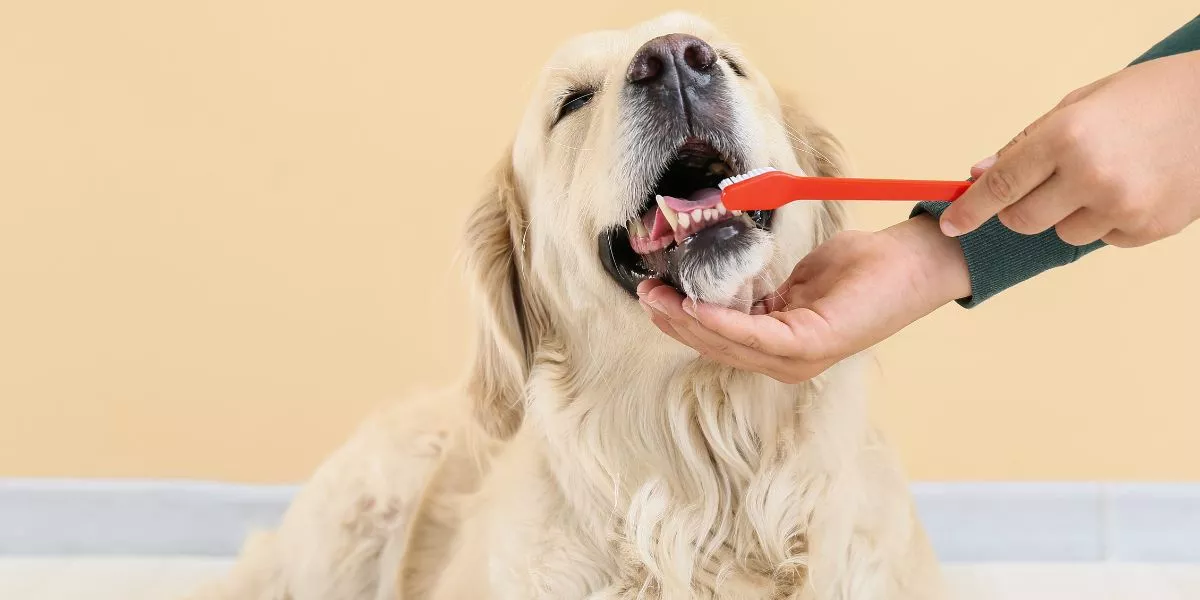
To ensure your dog's oral health remains optimal, mastering the art of brushing their teeth is crucial. Starting with the right tools and techniques is key, but there's more to it than just that. Imagine the satisfaction of seeing your furry friend's bright smile and knowing you're taking great care of their overall well-being. It all begins with the simple act of brushing – a routine that can have a lasting impact on your dog's health.
Importance of Canine Dental Care
Ensuring your dog's dental health is crucial for their overall well-being and longevity. Just like humans, dogs can suffer from dental issues like plaque buildup, tartar accumulation, gum disease, and tooth decay. Neglecting your dog's oral hygiene can lead to pain, discomfort, and even more severe health problems over time.
Poor dental health in dogs can impact their ability to eat, play, and interact with you and other pets. Additionally, bacteria from dental infections can enter the bloodstream and affect vital organs, such as the heart, liver, and kidneys.
Regular dental care, including brushing your dog's teeth, can prevent these issues and keep your furry friend happy and healthy. By establishing a dental care routine early on, you can help your dog maintain strong teeth and gums throughout their life. Professional cleanings from a veterinarian may also be necessary to address any advanced dental problems. Remember, a little effort now can go a long way in ensuring your dog's oral health and overall quality of life.
Choosing the Right Toothbrush and Toothpaste
To ensure effective dental care for your dog, selecting the appropriate toothbrush and toothpaste is essential. When choosing a toothbrush for your furry friend, opt for one specifically designed for dogs. Dog toothbrushes come in various sizes to cater to different breeds and mouth sizes. A small toothbrush is ideal for small breeds, while a larger one suits bigger dogs. Additionally, look for brushes with soft bristles to prevent damaging your dog's gums.
For toothpaste, never use human toothpaste as it can be harmful if ingested by your dog. Canine toothpaste comes in flavors like poultry, beef, or peanut butter, making it more appealing to your pooch. These flavors can make the brushing experience more pleasant for your dog, encouraging cooperation. Remember, regular brushing using the right tools is key to maintaining your dog's oral health.
Step-By-Step Guide to Brushing Your Dog's Teeth
Start by gently introducing your dog to the toothbrush and toothpaste to familiarize them with the process. Let your dog sniff and lick the toothbrush and toothpaste to get accustomed to the taste and texture. Once they seem comfortable, apply a small amount of dog toothpaste onto the toothbrush. Lift your dog's lips and brush in gentle circular motions, focusing on the outer surfaces of the teeth. Be sure to pay extra attention to the back teeth where plaque tends to build up.
Next, move to the inner surfaces, angling the brush slightly upwards to reach the gum line. Brushing the gum line helps prevent gum disease and keeps your dog's mouth healthy. Remember to brush the front teeth as well, using a vertical motion for optimal coverage. Throughout the process, offer praise and rewards to reinforce positive behavior.
Make brushing a positive experience for your dog by keeping the sessions short and ending on a positive note. With patience and consistency, your dog will eventually become more comfortable with this oral care routine.
Tips for Successful Teeth Brushing Routine
For a more effective teeth brushing routine, consider incorporating these simple yet essential tips.
First, make sure to choose a toothbrush and toothpaste specifically designed for dogs. Human toothpaste can be harmful if ingested, so always opt for products made for canine dental care.
Secondly, introduce your dog to the toothbrush and toothpaste gradually. Let them sniff and taste these items before starting the brushing process to help them feel more comfortable.
Additionally, aim to brush your dog's teeth at least 2-3 times a week to maintain optimal oral health. Consistency is key in preventing plaque and tartar buildup. Remember to use gentle, circular motions when brushing to reach all tooth surfaces and gum lines effectively.
Lastly, reward your furry friend after each successful brushing session with praise or a small treat to create a positive association with the routine. By following these tips, you can establish a successful teeth brushing routine that benefits your dog's overall oral health.




